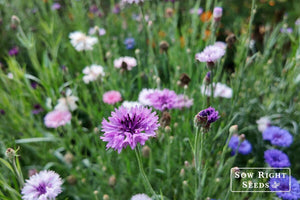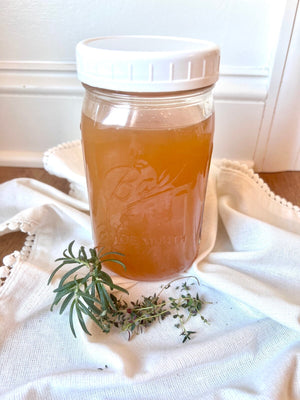What to Plant in July: 10 Seeds You Can Sow in Your Summer Garden
Seasonal gardeningIt’s not too late to plant flowers, herbs, and vegetables in July. Even though it can be the hottest month of the year, there are plants that thrive in the heat. We’ll share what seeds you can plant in July to enjoy an amazing harvest.

What Seeds to Plant in July
Picking the right seeds will ensure that July is a successful time for planting. There are some seeds that germinate in the warm soil and then develop their fruits in the cooler months. Also, some vegetables taste even better when they’ve had a touch of frost. So it’s not too late to plant seeds in your garden.
Planting in July gives you an opportunity to use space that might be available. Are your spring peas done? Put in a determinate tomato.
July is also the time to remember your succession planting.
Here are our top 10 choices for seeds to plant in July.
Cowpeas
Cowpeas are a vegetable that you can plant throughout the growing season. The warm summer weather is perfect for direct sowing cowpeas. They need a sunny location with well-draining soil. You can harvest peas early to eat them as a snap bean when the seeds inside are still small. Once the peas swell up, they are at the right stage for shelling. You can also wait for cowpeas to mature completely and dry for long-term storage. This range of edible stages makes cowpeas an excellent summer vegetable. Planting cowpeas will also benefit your garden soil. These legumes will fix nitrogen in the soil making it available for other plants you grow.
Cucumbers
Cucumbers are a refreshing summer vegetable that grows well in the warm sun. The ideal soil temperature for cucumbers is 70º F, which makes July a great month for planting cucumber seeds. Starting cucumbers from seed outdoors means you don’t have to worry about hardening off seedlings or transplant shock. Keep cucumber plants well-watered and fertilized for the best fruit production. For heat-tolerant varieties, try Armenian Pale Green and Painted Serpent cucumbers.
Okra
Okra is a fast-growing, heat-loving plant. While typically grown for its plentiful seedpod production you could also grow okra for its beautiful flowers. The pale yellow blooms on okra plants look like hibiscus flowers.
Okra plants have a deep taproot so direct sowing is recommended. It grows best in warm climates with temperatures between 75º and 90º F. Before planting okra seeds, you can soak them overnight or scarify the seeds by nicking the hard seed coat. These methods will result in quicker germination. Plant okra seeds 1/2 to 1 inch deep and keep the soil moist. Okra seeds should germinate in 7 to 15 days and have edible pods in as little as 50 days.
Winter Squash-Pumpkins
You may think of winter squash and pumpkins as fall vegetables, but they need to be planted in July for a fall harvest. Winter squash is easy to start from seed and can be planted directly in the garden. Soil temperature between 65 and 75ºF is optimal for germination.
Bush Beans
Bush beans grow easily in most locations and are a great vegetable choice for beginner gardeners. The seeds are easy to plant, and from one bean seed, you’ll have a plant that can produce enough beans for several meals. You can succession plant bean seeds for a continual summer harvest or plant them all at once for harvesting bushels full for canning and preserving.
Another reason to plant bush beans is their adaptability. Beans are nitrogen-fixing plants, which means you won’t have to apply additional fertilizer. They will also improve your soil for the next crop you plant, such as cucumbers or tomatoes.
Heat-tolerant Greens
Planting greens in the heat of July may sound surprising. But there are heat-tolerant varieties that will give you a delicious harvest. These greens will add a fresh and healthy boost to your garden in locations with a little afternoon shade. Swiss chard is a natural all-year-round producer. Try Malabar spinach, Swiss chard, and All-Year-Round lettuce for some delicious garden greens. These varieties are known for their heat tolerance.
Herbs
July is an excellent time to plant your herbs. Annual herbs such as basil and cilantro can be refreshed in July, and perennial herbs such as rosemary, mint, and thyme are ready for the warm summer days. Take stock of your herb garden and make sure you have all the flavors you'll need for fall canning recipes.
Flowers
Don’t forget about flowers. We usually get excited about spring flowers, but there’s still time to plant summer flowers and enjoy their blossoms before the first fall frost. Sunflowers and Zinnias are two heat-loving flowers that will thrive in the summer sun. When you plant sunflowers in July, they’ll be blooming in time to use in your fall bouquets and decor. Zinnias are also excellent cut flowers and will keep blooming until they freeze.
Fall Tomatoes
Didn’t start your tomato seeds indoors in the spring? You can still have a fall harvest of tomatoes when you plant in July. Tomatoes can take 50 to 80 days to reach maturity, so in many gardening zones, there is still plenty of time to enjoy ripe red tomatoes (or black or yellow heirlooms). You can even cover tomato plants for protection from light fall frosts. Determinate tomatoes such as Tiny Tim will give you a productive harvest in a short amount of time.
Winter Radish
July is the time to plant winter radishes in many locations. So, what is a winter radish? Winter radishes take longer to grow and are firmer and more dense than spring radishes. Also, winter radishes are often used as a cooked vegetable.
Although not every growing zone is the same, July is still a month that is open for planting.
- Choose your seeds for varieties that will mature in the time you have.
- Gardening zones with a late frost date will have more choices of what to plant in July.
- July is a great time to plant broccoli in gardening zones with an early frost date.
-
Gardeners with a longer growing season can still plant melons in July.
Wherever your garden is, planting from seed is still possible in July. Whether succession planting or planning for a fall harvest, consider what you can add in July for a summer boost.
Popular Posts
-

How to Grow Bachelor Buttons (Cornflowers) from Seed: Easy Flower for Beginners
-

Fresh Herb Bone Broth Recipe for the Instant Pot






Leave a comment